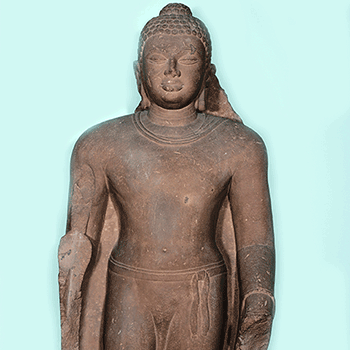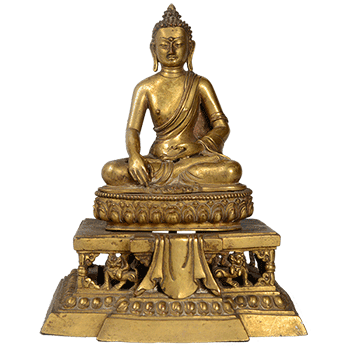This striking sculpture depicting the Ganga King Narsimha worshipping Jagannath dates back to the 13 BCE and finds its origin in Konark, Orissa. It is 89 cm in height, 47 cm in width and 23 cm in depth. This artefact is currently on display in the Late Medieval Gallery within the National Museum, New Delhi.
























